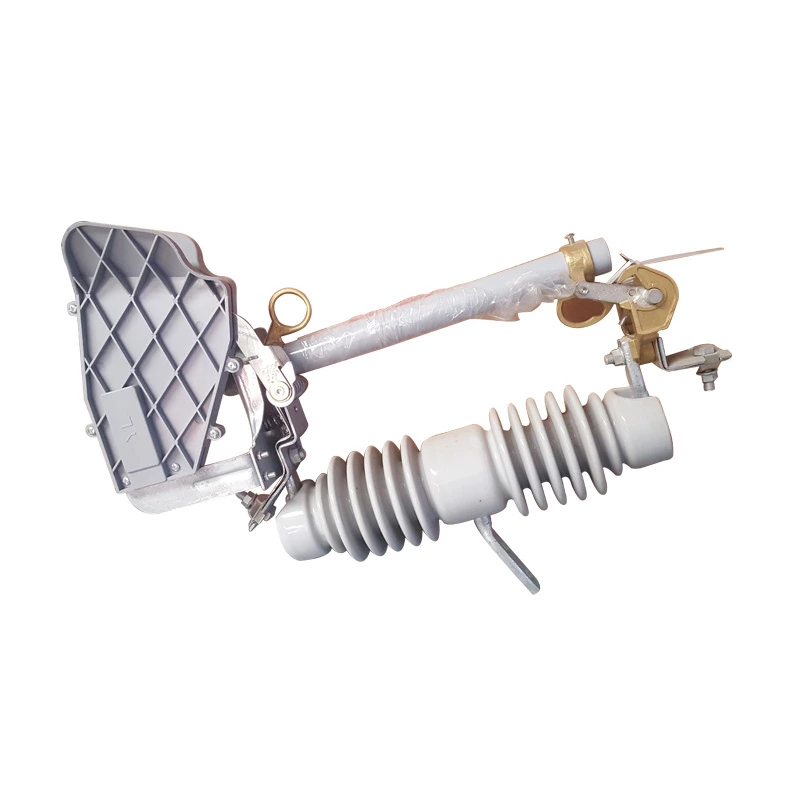Scientific Principles And Engineering Practice Of The Disconnection Sequence Of Drop-out Fuses
1. Technical specifications for disconnection sequence
In the operation of 10kV distribution network, the standard disconnection sequence of High Voltage Fuse is: first disconnect the middle phase (phase B), then disconnect the leeward side phase (phase C), and finally disconnect the windward side phase (phase A). This sequence has been incorporated into the "Electric Power Safety Work Regulations" (GB 26859-2011) and has become a basic criterion for electrical operation. In specific implementation, the three-phase disconnection time interval is required to be no less than 0.3 seconds, and the operation angle is controlled within the range of 45°±5°.
2. Disconnection order Electrical analysis
1. Principle of intermediate phase priority disconnection
In a symmetrical three-phase system, the single-phase disconnection of a neutral point ungrounded system will form a two-phase grounded operating state. Disconnecting the middle phase first can minimize the asymmetry of the system:
Electrical angle: The phase difference between the middle phase (B phase) and the other two phases is 120°. After disconnection, the remaining two phases (A and C) form a 180° symmetrical operation mode
Voltage distribution: The neutral point displacement voltage can be controlled below 38% of the phase voltage to avoid excessive voltage stress on the equipment insulation
Arc control: The electromagnetic interference is minimized when the arc of the middle phase is extinguished, reducing the induced overvoltage on other phases
2. Phase disconnection order selection
Leeward side priority operation is based on aerodynamic principles:
Arc blowing direction: When the windward side is disconnected, the wind may blow the hot free gas towards the operator
Mechanical stability: Disconnecting the leeward side first can prevent the melting tube from swinging uncontrolled under the action of wind
Visual interference: The melting tube on the windward side is reserved until the last operation to provide a spatial positioning reference for the operator
3. Mechanical mechanism of sequential control
1. Melt pipe dynamic characteristics
The melt pipe is subject to the combined effects of gravity torque, wind load, and hinge friction during its fall:
The center of mass offset of the middle phase melt pipe is the smallest (about 2-3cm), and the kinetic energy release process is the most stable
The side phase melt pipe may generate rotational torque due to the influence of lateral wind force, and priority is given to Operating on the leeward side can counteract this effect
2. Arc energy dissipation path
The breaking sequence directly affects the arc energy distribution:
The arc energy of the first phase (phase B) accounts for 45%-50% of the total system energy
When the remaining two phases are disconnected, the residual energy of the system has decayed by more than 60%
The maximum single arc energy can be limited to less than 8kJ by operating in the standard sequence
1. Operation in strong wind environment
When the wind speed exceeds 8m/s, the disconnection sequence should be adjusted to:
1) Middle phase (B phase)
2) Windward side phase (A phase)
3) Leeward side phase (C phase)
This adjustment can prevent the strong wind from causing the broken fuse to collide with the live equipment, and use the wind pressure to assist the arc to elongate quickly.
2. Fault state operation
When a single-phase ground fault occurs in the system:
The fault phase should be disconnected first, but the fault point should be confirmed in conjunction with the insulation monitoring device
The disconnection interval of the non-fault phase should be extended to 0.5 seconds to prevent the superposition of operating overvoltage
5. Order Risk cases of violations
In 2019, a power supply company violated regulations and caused equipment damage:
Fault process: The operator first disconnected phase A, and continued to operate phase B when the arc was not completely extinguished
Result analysis: The superposition of two-phase arcs generated 16.7kA power frequency continuous current, causing the fuse to burst
Energy calculation: When operating in violation of regulations, the arc energy reached 2 times the standard value .3 times (18.5kJ)
Six. Improvements of traditional operations by modern technology
Intelligent interlocking device: Forced locking of operation sequence through phase sensor, automatic locking mechanism arc in case of illegal operation
Monitoring system: Ultraviolet photoelectric detector
Subsequent operations are allowed only after the detector determines that the arc is completely extinguished
Dynamic wind pressure compensation: A damping device is installed on the rotating shaft of the melting tube to eliminate the influence of wind force on the operation sequence
... NPM has a deep understanding of the technical connotation of sequential control to avoid mechanical execution of regulations while ignoring intrinsic safety requirements.

